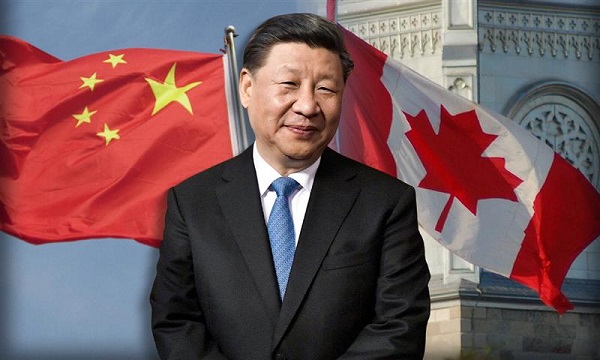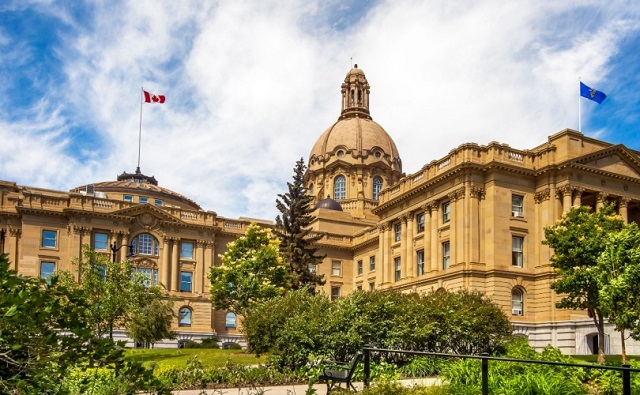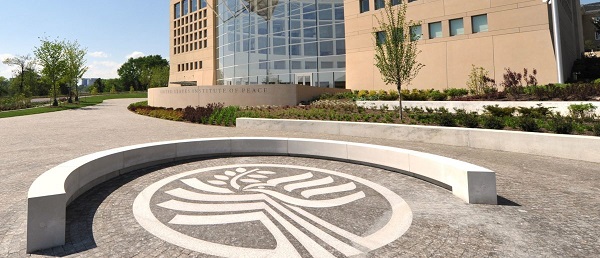National
Parks Canada deer hunt project to cost taxpayers $12 million

From the Canadian Taxpayers Federation
Author: Ryan Thorpe
The expert marksmen, from the United States and New Zealand, only managed to kill 84 deer. Eighteen were the wrong kind of deer
At $10,000 a deer, this is already an expensive hunting trip.
But the bill is about to get a lot bigger.
Parks Canada has earmarked $12 million for its controversial plan to eradicate a deer species and restore native vegetation on a tiny island in British Columbia, according to access-to-information records obtained by the Canadian Taxpayers Federation.
“It’s hard to imagine how Parks Canada could spend millions shooting deer,” said Franco Terrazzano, CTF Federal Director. “Here’s the kicker: hunters who actually live on the island are bagging these deer for free.”
The $12-million Fur to Forest program is a Parks Canada effort to eradicate the European fallow deer population on Sidney Island (located between the coast of B.C. and Vancouver Island), and restore native vegetation, tree seedlings and shrubs.
So far, Parks Canada has employed exotically expensive hunting techniques.
Foreign sharpshooters armed with restricted semi-automatic rifles hunted the deer during phase one of the operations. Phase one cost more than $800,000, including $67,000 spent renting a helicopter, for a hit to taxpayers of $10,000 a head.
The expert marksmen, from the United States and New Zealand, only managed to kill 84 deer. Eighteen were the wrong kind of deer – native black-tailed deer. They weren’t able to confirm the species of the three other deer shot.
It is illegal to harvest the wrong species of animal during a hunt in B.C.
Meanwhile, residents of Sidney Island organized their own hunt last fall. They killed 54 deer at no cost to taxpayers.
“It’s crazy that Parks Canada flew in marksmen from other countries to shoot deer,” Terrazzano said. “It’s even crazier that these ‘marksmen’ kept shooting the wrong kind of deer.”
It’s been widely reported the project will cost $5.9 million.
But the records obtained by the CTF show the story gets worse for taxpayers. A detailed project budget obtained through an access-to-information request reveals Parks Canada plans to spend $11.9 million on the scheme.
Taxpayers will be on the hook for $4.1 million for the killing of deer on Sidney Island, according to the records. An additional $2.8 million will go towards the salaries and benefits of Parks Canada staff.
A total of $137,000 will be spent on “firearms certification for international workers” throughout the project, while $1.4 million will go towards studies and analysis, and nearly $800,000 is earmarked for “Indigenous participation.”
Breakdown of costs, Fur to Forest program, access-to-information records
|
Salaries |
$2.3 million |
|
Analysis and Studies |
$1.4 million |
|
Indigenous Participation |
$800,000 |
|
Deer Eradication |
$4.1 million |
|
Miscellaneous* |
$3.3 million |
|
Total |
$11.9 million |
*Includes $53,000 for “forest restoration” services, “plants” and “seedlings.”
Parks Canada estimates there are between 300 and 900 invasive deer on the island. Phase two of the operation, which is scheduled to begin this fall, will involve ground hunting with dogs.
“Let’s just state the obvious: Parks Canada is bad at hunting and more money isn’t going to make it better,” Terrazzano said. “The good folks who live on Sidney Island are clearly more qualified to handle this and the government should get out of their way.”
2025 Federal Election
Canadian officials warn Communist China ‘highly likely’ to interfere in 2025 election

From LifeSiteNews
The Canadian government believes China will use specific tools ahead of the April election such as AI and social media to specifically target ‘Chinese ethnic, cultural, and religious communities in Canada using clandestine and deceptive means.’
Canadian officials from the Security and Intelligence Threats to Elections (SITE) Task Force warned that the Chinese Communist Party (CCP) government will most likely try to interfere in Canada’s upcoming federal election.
Vanessa Lloyd, chair of the task force, observed during a March 24 press conference that “it is expected that the People’s Republic of China, or PRC, will likely continue to target Canadian democratic institutions and civil society to advance its strategic objectives.”
SITE is made up of representatives of multiple Canadian departments and agencies that have a security mandate.
Lloyd’s regular job is as the Deputy Director of Operations, second in charge, for Canada’s spy agency, the Canadian Security Intelligence Service (CSIS).
According to Lloyd, officials from China as well as CCP proxies will be “likely to conduct foreign interference activity using a complex array of both overt and covert mechanisms.”
Her warning comes after the final report from the Foreign Interference Commission concluded that operatives from the CCP may have had a hand in helping to elect a handful of MPs in both the 2019 and 2021 Canadian federal elections. It also concluded that China was the primary foreign interference threat to Canada.
The commission shed light on how CCP agents and proxies conduct election interference, with one method being to rally community groups to make sure certain election candidates are looked down upon.
According to Lloyd, it is “highly likely” that China will engage in certain election meddling using specific tools such as AI.
“The PRC is highly likely to use AI-enabled tools to attempt to interfere with Canada’s democratic process in this current election,” she noted, adding that China will also use social media as well to “specifically target Chinese ethnic, cultural, and religious communities in Canada using clandestine and deceptive means.”
Lloyd also noted that the Indian government could also be involved in meddling, as it has the “intent and capability” to “assert its geopolitical influence.”
Canada will hold its next federal election on April 28 after Prime Minister Mark Carney triggered it on Sunday.
As reported by LifeSiteNews earlier in the month, a new exposé by investigative journalist Sam Cooper claims there is compelling evidence that Carney and former Prime Minister Justin Trudeau are strongly influenced by an “elite network” of foreign actors, including those with ties to communist China and the World Economic Forum.
In light of multiple accusations of foreign meddling in Canadian elections, the federal Foreign Interference Commission was convened last year to “examine and assess the interference by China, Russia, and other foreign states or non-state actors, including any potential impacts, to confirm the integrity of, and any impacts on, the 43rd and 44th general elections (2019 and 2021 elections) at the national and electoral district levels.”
The commission was formed after Trudeau’s special rapporteur, former Governor General David Johnston, failed in an investigation into CCP allegations after much delay. That inquiry was not done in public and was headed by Johnston, who is a “family friend” of Trudeau.
Johnston quit as “special rapporteur” after a public outcry following his conclusion that there should not be a public inquiry into the matter. Conservative MPs demanded Johnston be replaced over his ties to China and the Trudeau family.
Justice
Democracy watchdog calls for impartial prosecution of Justin Trudeau

From LifeSiteNews
Democracy Watch asked that an independent prosecutor be appointed to look over evidence it provided to get permission to carry out a private prosecution of Trudeau’s role in the SNC-Lavalin affair.
One of Canada’s most well-respected democratic watchdog groups says the Ontario government should organize for an impartial prosecutor to investigate former Prime Minister Justin Trudeau’s involvement in the SNC-Lavalin affair.
In a letter dated March 21 written to Ontario’s Attorney General Doug Downey, watchdog Democracy Watch asked directly that an independent prosecutor be appointed to look over evidence from its recent Ontario Court of Justice application to get approval to go ahead with a private prosecution of Trudeau’s role in the 2019 scandal.
“The RCMP (Royal Canadian Mounted Police) did a very superficial investigation into the Trudeau Cabinet’s obstruction of the prosecution of SNC-Lavalin,” wrote lawyer Duff Conacher, co-founder of Democracy Watch, on behalf of the group’s board of directors.
Conacher noted that the RCMP “didn’t even interview many witnesses or try to obtain key secret Cabinet communication records, and buried the investigation with an almost two-year delay, and then made a behind-closed-doors, very questionable decision not to prosecute anyone.”
SNC-Lavalin, which now goes by the name “AtkinsRéalis,” in 2019 pleaded guilty to fraud in a Québec Provincial Court and was hit with a $280 million fine. Company executives also admitted that they had paid $47.7 million in bribes to get contracts in Libya.
In October 2023, Canadian Liberal MPs on the ethics committee voted to stop the RCMP from testifying about the SNC-Lavalin bribery scandal.
In June 2023, LifeSiteNews reported that the RCMP denied it was looking into whether Trudeau and his cabinet committed obstruction of justice concerning the SNC-Lavalin bribery scandal.
In its letter, Democracy Watch called up Downey to strike a committee comprised of persons without political party ties to choose an impartial lawyer to be an Independent Special Prosecutor. This prosecutor would review all the evidence and then make a public decision about Trudeau’s involvement in the affair.
“The RCMP lacks independence from the Prime Minister and Cabinet ministers who handpick the RCMP Commissioner and deputy commissioners and division heads through a secretive process, and they all serve at the pleasure of the Cabinet so they are vulnerable to political interference, which is likely part of the reason the RCMP rolled over and let Trudeau off,” noted Conacher.
“The Attorney General is also a tainted by partisanship as he is from Ontario’s ruling party and so, to ensure integrity and impartiality, a fully independent special prosecutor needs to be appointed to review the evidence concerning whether the prosecution of Trudeau should proceed.”
Conacher also stated that a public inquiry was needed to see why the RCMP “tried to cover up its investigation” and chose not to prosecute.
Retired judge also says Trudeau should be prosecuted
SNC-Lavalin was faced with charges of corruption and fraud concerning about $48 million in payments made to Libyan government officials between 2001 and 2011. The company had hoped to be spared a trial and have its prosecution deferred.
However, in 2019, then-Attorney General Jody Wilson-Raybould did not go along with the request and contended that both Trudeau and his top Liberal officials had inappropriately applied pressure on her for four months to directly intervene in the criminal prosecution of the group.
Jen Danch of Swadron Associates law firm will be representing Democracy Watch for its application, with Wayne Crookes, founder of Integrity B.C., being a key supporter of it.
Of interesting note is that the application includes an opinion from an unnamed retired superior court justice who also supports the prosecution effort.
“There are reasonable and probable grounds to believe that the Prime Minister committed the offence of Obstruction of Justice under s. 139(2) of the Criminal Code and possibly the offence of Breach of Trust by a Public Official under s. 122 of the Criminal Code,” wrote the judge.
“The facts outlined by the Ethics Commissioner and the evidence of Ms. Wilson-Raybould at the House Committee on Justice indicate that the Prime Minister and his staff set out to interfere in the prosecution of SNC-Lavalin by trying to stop the prosecution and replace an apparently properly founded prosecution with a less onerous process that would avoid the consequences of a conviction for SNC-Lavalin.”
At this time, there will be a hearing in Ottawa on March 28 where a judge will decide procedural processes regarding how or if the prosecution will be allowed to continue.
Last year, the RCMP confirmed it never talked with Trudeau or was able to view secret cabinet records before declining to levy charges.
As for the initial investigation concerning SNC-Lavalin, Wilson-Raybould testified in early 2019 to Canada’s justice committee that she believed she was moved from her justice cabinet posting to veterans’ affairs due to the fact she did not grant a request from SNC-Lavalin for a deferred prosecution agreement rather than a criminal trial.
Of note is that a criminal conviction would have banned the company from landing any government contracts for 10 years.
Trudeau flat-out denied it was being investigated by the RCMP.
Less than four years ago, Trudeau was found to have broken the federal ethics laws, or Section 9 of the Conflict of Interest Act, for his role in pressuring Wilson-Raybould.
-

 Alberta2 days ago
Alberta2 days agoFederal emissions plan will cost Albertans dearly
-

 International1 day ago
International1 day agoEurope Can’t Survive Without America
-

 Business24 hours ago
Business24 hours agoWhy a domestic economy upgrade trumps diversification
-

 Business2 days ago
Business2 days agoPossible Criminal Charges for US Institute for Peace Officials who barricade office in effort to thwart DOGE
-

 Health2 days ago
Health2 days agoDr. Pierre Kory Exposes the Truth About the Texas ‘Measles Death’ Hoax
-

 2025 Federal Election2 days ago
2025 Federal Election2 days agoCanadian construction worker goes viral for saying he refused to shake Mark Carney’s hand
-

 Business17 hours ago
Business17 hours agoDOGE discovered $330M in Small Business loans awarded to children under 11
-

 Business2 days ago
Business2 days ago28 energy leaders call for eliminating ALL energy subsidies—even ones they benefit from






